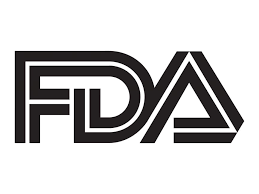Article
FDA Approves Novel Pathway Injection for Uveitic Macular Edema
Author(s):
Triamcinolone acetonide injectable suspension has been approved for administration via the suprachoroidal pathway—located in the back of the eye.

The US Food and Drug Administration (FDA) has approved triamcinolone acetonide injectable suspension (XIPERE) for the treatment of macular edema associated with uveitis via suprachoroidal administration.
The approval, granted to Bausch + Laumb, is the first indicated for a treatment of ophthalmic disease through the suprachoroidal pathway—located in the back of the eye. Triamcinolone acetonide is administered with Clearside Biomedical’s SCS Microinjector, which is designed to provide a targeted delivery of therapy while potentially reducing patient risk of cataracts, intraocular pressure elevation and exacerbation of glaucoma.
The FDA approval for suprachoroidal-administered triamcinolone acetonide was based on data from the pivotal, randomized, controlled, multicenter, double-masked phase 3 PEACHTREE trial. Investigators sought a primary efficacy endpoint of proportion of patients with 15-plus letter improvement in best corrected visual acuity (BCVA) at 24 weeks, among a trial population of 160 patients with macular edema associated with uveitis.
Trial data showed 47% of patients treated with triamcinolone acetonide achieved the BCVA mark of ≥15 letters by week 24, versus just 16% of patients in the control arm (P <.01). Common adverse events among trial participants included elevated intraocular pressure and eye pain.
PEACHTREE investigator Steven Yeh, MD, professor of ophthalmology and director of retinal disease and uveitis at the Stanley M. Truhlsen Eye Institute at the University of Nebraska Medical Center, praised the observed efficacy and safety of suprachoroidal-administered triamcinolone acetonide as well as the “exceptional access and high bioavailability” met by administering treatment through the posterior segment of the eye.
“With the approval of XIPERE, eye care professionals now have a new and innovative treatment option for their patients with macular edema associated with uveitis,” Yeh said.
George Lasezkay, PharmD, JD, president and chief executive officer of Clearside, described the suprachoroidal space as an “untapped frontier in eye health."
“We are proud to be the pioneers in treating serious retinal diseases by implementing this novel, targeted approach,” Lasezkay said. “With this approval, we begin a new era in delivering therapies to the back of the eye.”




